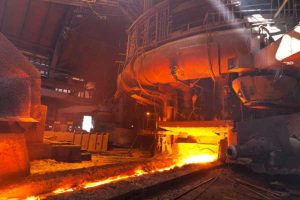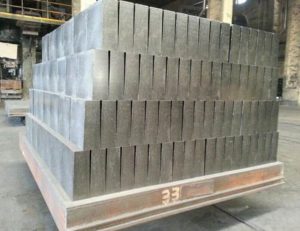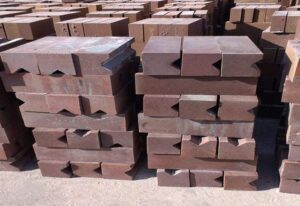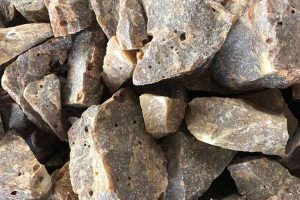Pota cürufu hattı parçalarının doğrudan bağlamayla rafine edilmesi, yeniden bağlanma (yarı yeniden bağlama) magnezyum-krom tuğla ikameleri, Yüksek saflıkta magnezya dolomit tuğlanın ultra yüksek sıcaklıkta pişirilmesinin yerli ve yabancı seçenekleri, tuğla yapım süreci özellikleri esas olarak: synthetic magnesia dolomite sand and high-purity magnesia sand as raw materials, anhydrous bonding agent, yüksek basınçlı kalıplama, ultra-high temperature (1700 ℃ or higher) firing and products to take waterproofing measures.
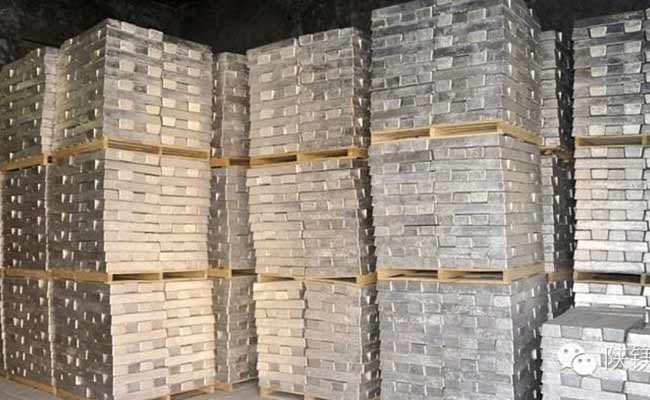
Magnesia Dolomite Brick Performance Characteristics
01. Good High-Temperature Resistance
The melting point of the main components MgO and CaO are as high as 2800℃ and 2600℃ respectively, and the eutectic temperature of both is also 2370℃. The microstructure is determined by MgO/CaO, but the direct combination of the two is the main feature of the microstructure. As the total amount of impurities (SiO2, Fe2O3, and Al2O3) generally does not exceed 3%, sometimes not more than 2.5%, the load softening starts at a temperature of more than 1700 ℃.
02. High Thermodynamic Stability
Due to the most negative free energy of CaO (the most stable), under vacuum magnesia dolomite brick than magnesium-chromium brick stability, the possibility of re-oxygenation of the steel is minimal. As long as the fire brick has ~ 20% CaO, it will make the relative volatilization of MgO significantly lower (due to CaO’s small amount of solid fusion in MgO and MgO preferential volatilization, in the MgO-CaO material to form a CaO-rich layer). This thermodynamic stability of fired magnesia dolomite brick determines its applicability in the use of extra-furnace refining steel tanks working under high-temperature vacuum.
03. Purifying Steel Capacity
Clean steel requires steel tank lining that does not contaminate the steel and preferably can purify the steel. Fired magnesia dolomite brick containing 20% free CaO has an obvious desulfurization effect, it can be used as the lining of a desulfurization steel tank.
04. Excellent Slag Resistance
Magnesia dolomite brick containing free CaO is more adaptable to slag: it has strong erosion resistance to high alkalinity (high CaO/SiO2 &) cüruf. Low alkalinity slag, due to the high activity of free CaO in the brick will preferentially react with SiO2 in the slag quickly to form a high melting point and high viscosity 2CaO-SiO2 and 3CaO-SiO2 protective layer, which adheres to the working surface of the brick, blocking the pores and preventing further erosion of the slag to the lining brick. Fakat, the loss of MgO-CaO refractory in CaO-Al2O3 slag is quite serious and increases with the increase of CaO/MgO ratio in the brick, because the free CaO in the brick immediately melts in CaO-Al2O3 slag and generates low melting point substances such as 12CaO-7Al2O3, which is discharged from the brick surface in a molten state, and the brick surface can not form a protective layer and accelerate the destruction. Although MgO-CaO refractories are difficult to be eroded by high CaO/SiO2 ratio slags, they are easy to be eroded when they also contain Fe2O3 and Al2O3, and the resistance of MgO-CaO refractories to CaO-Al2O3 slag erosion increases with the increase of their MgO/CaO ratio. It can be inferred that the fired magnesia dolomite brick containing about 80% MgO has higher erosion resistance to this slag.
When the total amount of raw material impurities (SiO2 + Al2O3 + Fe2O3) is less than 2%, the bulk density of synthetic magnesia dolomite sand is greater than 3.2 # cm3 and brick firing temperature than magnesia dolomite brick, this brick (some people called direct bonding magnesia dolomite brick) in the refining tank slag line parts of the use of significantly better than the direct bonding magnesia chromium brick.
Considering the high-temperature firing process complex, high investment, and high energy consumption, instead of polluting the environment asphalt anhydrous phenolic resin combined with the machine pressed not burned magnesia dolomite brick, in the steel tank slag line parts also achieved with firing magnesia dolomite brick similar to the use of the effect.
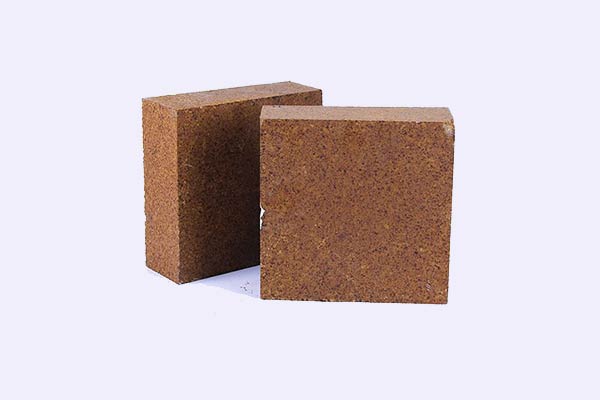
Two Disadvantages Of Magnesia Dolomite Brick
01. Fired brick line expansion rate is large (1600 ℃ up to 1.8% ~ 2.0%) at the same time re-fired shrinkage rate of 0.35% ~ 0.61%. Resin bonded non-fired magnesia dolomite brick also has a high thermal expansion, and shrinkage when cooled after high-temperature use. In this case, the brick lining joints cracked, sometimes concentrated large cracks. When this kind of steel tank continues to be used, high-temperature steel and slag will leak out through the large cracks causing steel leakage accidents.
02. MgO-CaO system refractories are easily hydrated. In addition to taking water-proofing measures in the brick-making process, measures should be taken to avoid contact with water, water vapor, and even air in the transportation, storage, masonry, and use of the products. Örneğin, the surface of the product thermoplastic packaging or products in sealed containers (vacuum) in storage. The sealed container of calcium magnesium products must be used immediately for masonry and other construction processes, and baking and put into use as soon as possible, in the use of the process to avoid the temperature of the product dropping below 600 ℃.

